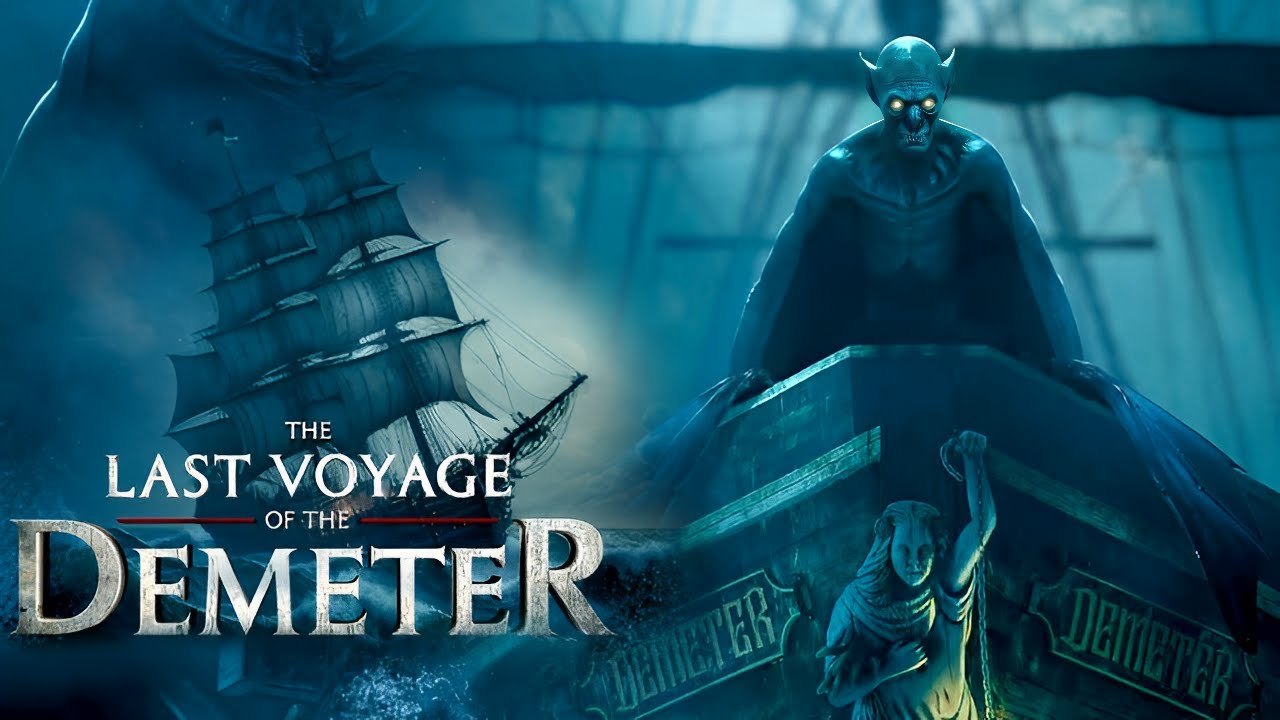The Last Voyage of the Demeter (2023)

The Last Voyage of the Demeter, directed by André Øvredal and released in 2023, stands as a notable addition to the canon of supernatural horror films. This film, written by Bragi F. Schut Jr. and Zak Olkewicz, is a chilling adaptation of “The Captain’s Log,” a chapter from Bram Stoker’s iconic 1897 novel Dracula. While Stoker’s Dracula has inspired countless adaptations, The Last Voyage of the Demeter offers a fresh and intensely atmospheric take on a brief but pivotal section of the original story.
The film’s premise centers around the ill-fated voyage of the merchant ship Demeter, which sets sail from Varna, Bulgaria, to England. Unbeknownst to the crew and passengers, their cargo includes a coffin containing the infamous vampire Count Dracula. The story unfolds through the ship’s captain’s log, revealing the terror and desperation that ensue as the crew is gradually picked off by the malevolent force aboard.
The Last Voyage of the Demeter excels in its adaptation of the source material. By focusing on the log of Captain Elliott (played with gravitas by actor Liam Cunningham), the film brings to life the claustrophobic dread and escalating horror faced by the ship’s crew. The film’s screenplay effectively expands on the sparse details provided in Stoker’s original text, adding depth to the characters and their individual struggles.
One of the film’s greatest strengths lies in its ability to create a palpable sense of dread. Øvredal’s direction skillfully harnesses the confined setting of the ship to build tension. The dimly lit corridors and creaking wood of the Demeter become a character in themselves, embodying the creeping menace of Dracula’s presence. The film uses this setting to its advantage, creating a claustrophobic and oppressive atmosphere that enhances the horror elements.
The visual style of The Last Voyage of the Demeter is striking. Cinematographer Jan-Michael Losada’s work captures the haunting beauty of the ship at sea and the grotesque horror of Dracula’s attacks. The film’s use of practical effects and makeup to bring the vampire to life is particularly commendable. Dracula is depicted not only as a terrifying monster but also as a complex figure of dread, embodying the fear of the unknown that Stoker’s novel evokes.
The sound design and score also play crucial roles in amplifying the film’s atmosphere. The eerie soundscapes and unsettling music create a continuous sense of unease, while also highlighting moments of high tension and horror. The integration of these elements with the narrative ensures that the audience remains engrossed in the unfolding terror.
The performances in The Last Voyage of the Demeter are robust and engaging. The cast, including standout performances from actors such as Corey Hawkins and Aisling Franciosi, brings depth to their roles, making the crew’s plight all the more compelling. Their portrayals of fear and desperation are integral to the film’s emotional impact. As the crew members face their nightmarish fate, their individual stories and reactions add layers to the narrative, making the horror more personal and impactful.

On a thematic level, the film delves into the classic horror trope of isolation and the unknown. The Demeter’s voyage serves as a microcosm for the wider fears of the Victorian era, reflecting anxieties about the unknown and the monstrous. By focusing on a single setting and a contained group of characters, The Last Voyage of the Demeter explores how fear can quickly escalate in an isolated environment, and how the presence of a malevolent force can unravel the social order.

The Last Voyage of the Demeter is a compelling and atmospheric horror film that successfully adapts a lesser-known chapter of Bram Stoker’s Dracula. With its effective use of setting, strong performances, and a deep understanding of the source material, the film offers a fresh and engaging take on a classic tale of terror. By focusing on the doomed voyage of the Demeter, the film not only pays homage to Stoker’s original work but also stands on its own as a masterful piece of supernatural horror cinema.











